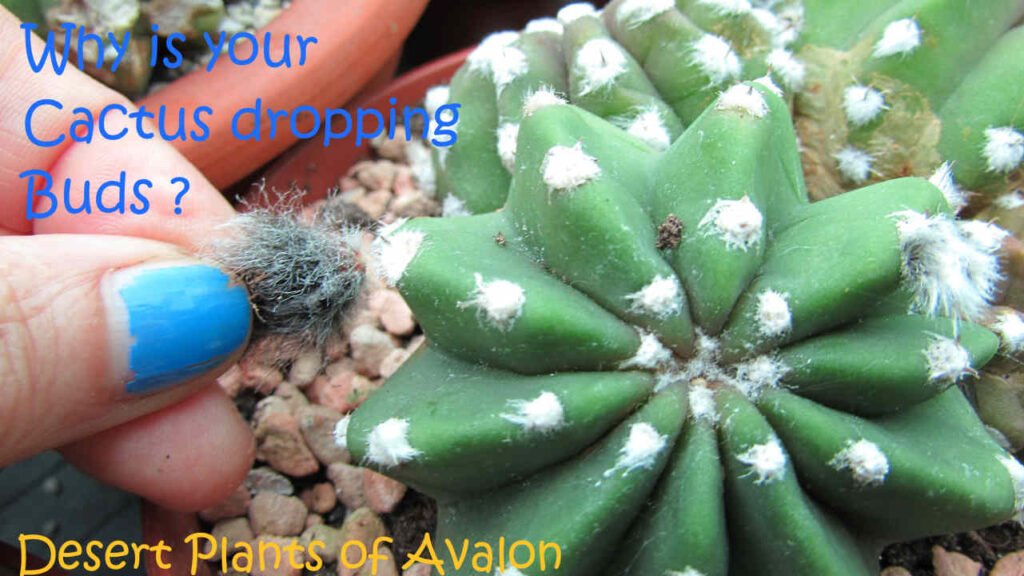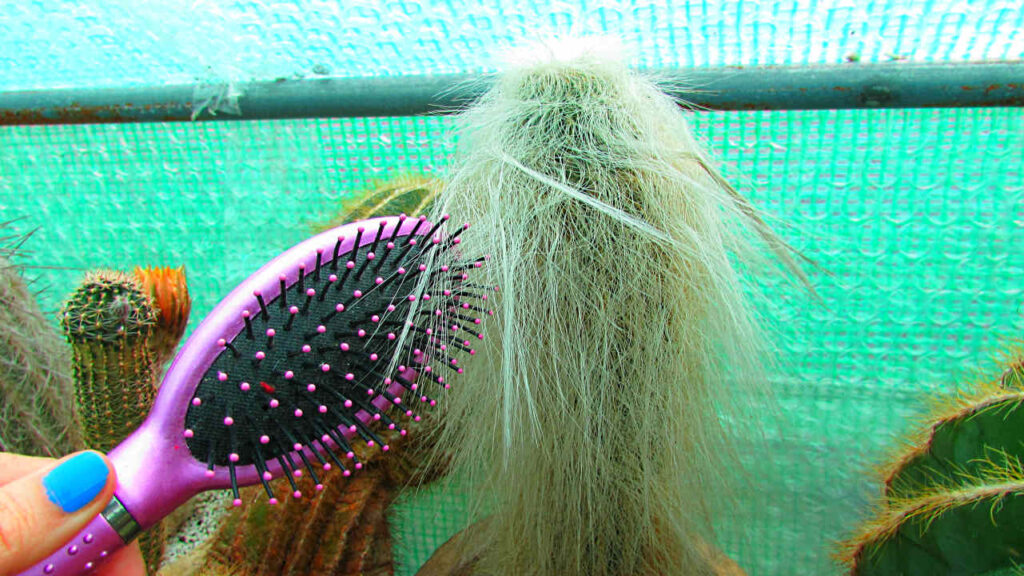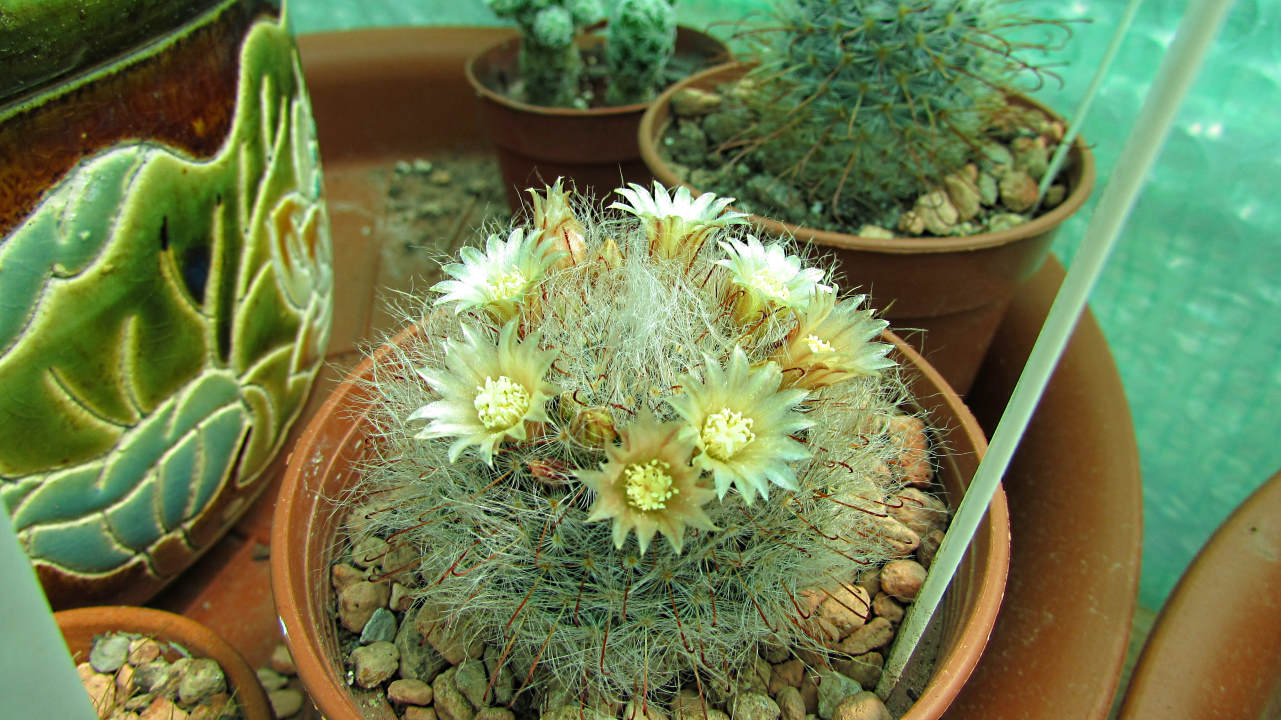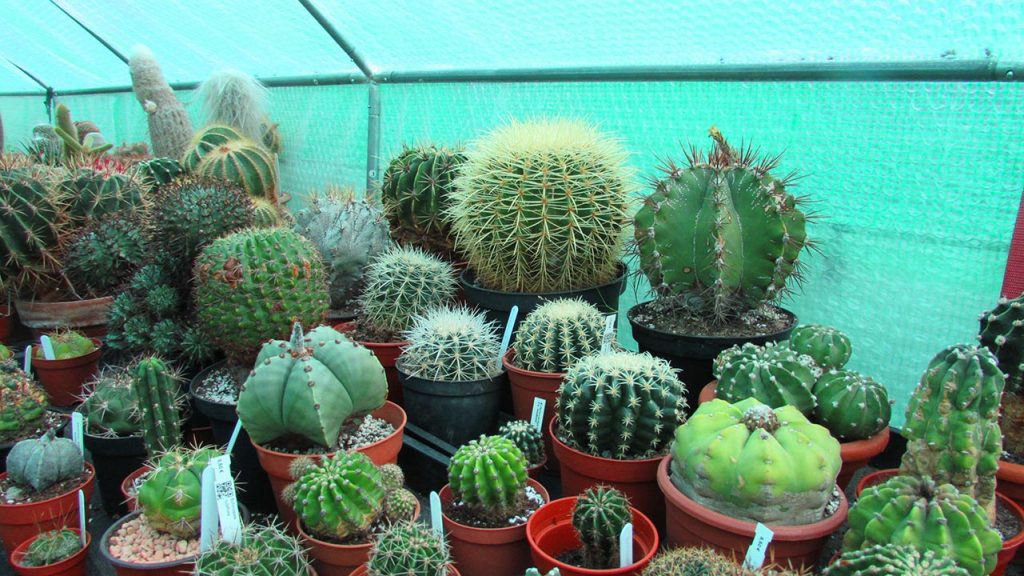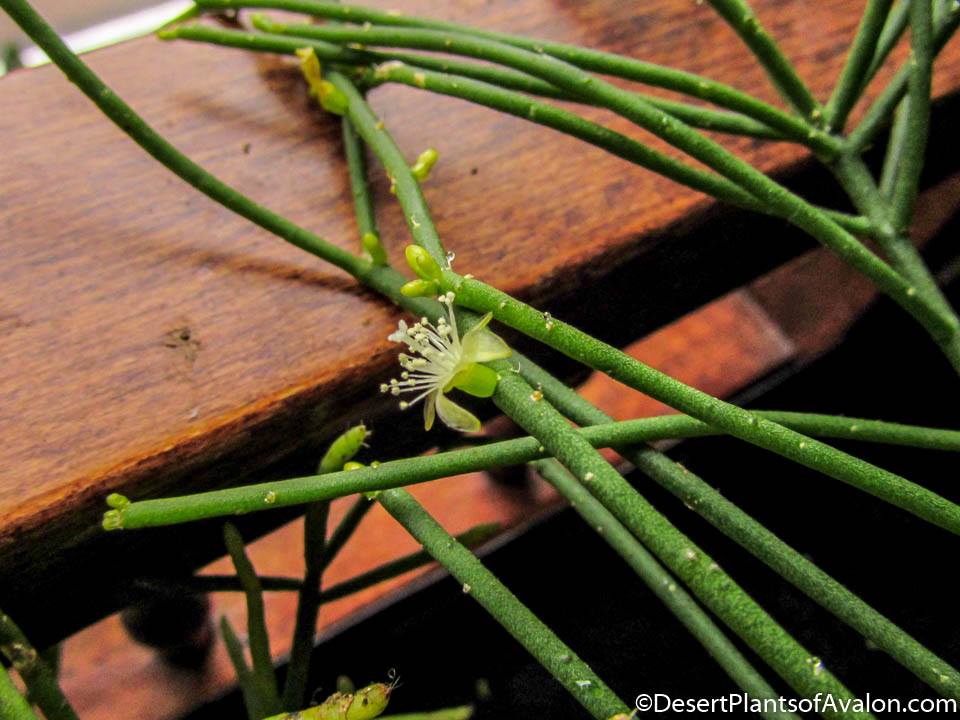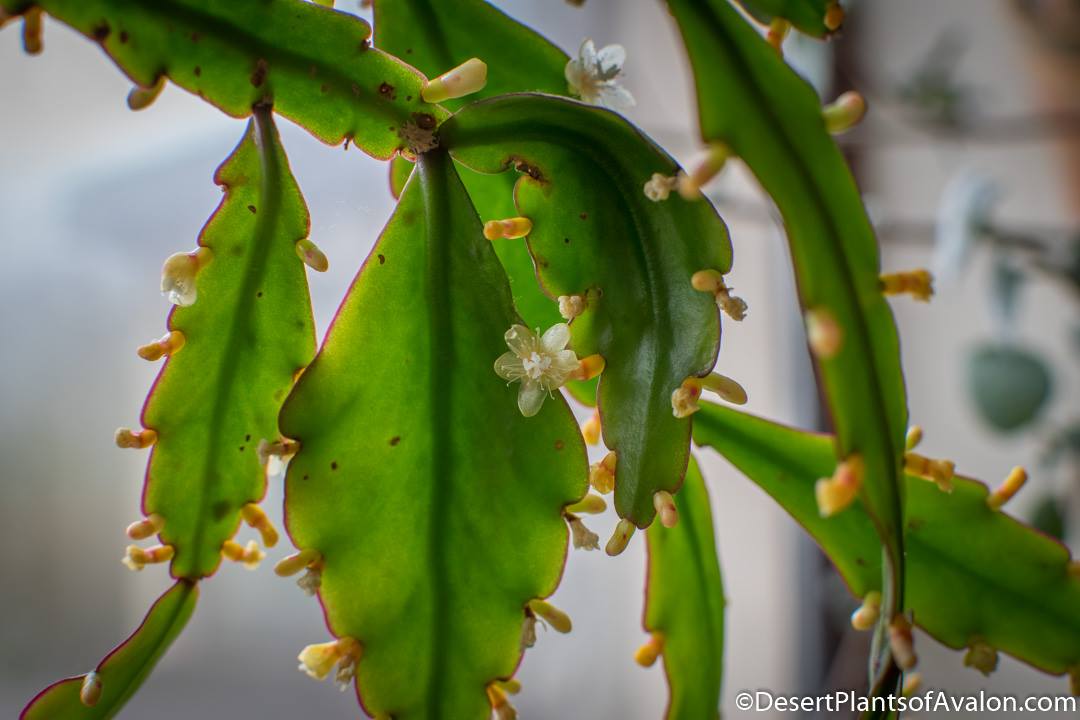Hi Guys 😀
I hope you are enjoying the Summer growing season this year and I hope that many of you will be enjoying seeing your Cacti coming into bud and bloom, but what happens if your Cactus is growing buds but they fall off ? It can be very disappointing when we are so looking forward to seeing the blooms especially if its a cactus that will be the first time blooming for you, but its very common for the buds to grow so far and then drop off, there are quite a few reasons why this can happen and In this Article I will be talking about the reasons why your Cactus is dropping buds.

I have made a special video on my Cacti and Succulent You Tube Channel called Desert Plants of Avalon on Why Your Cactus is dropping Buds ? and I will include this video at the end of this Article.
Here are the most common reasons why your Cactus is dropping Buds.
1, THE WEATHER
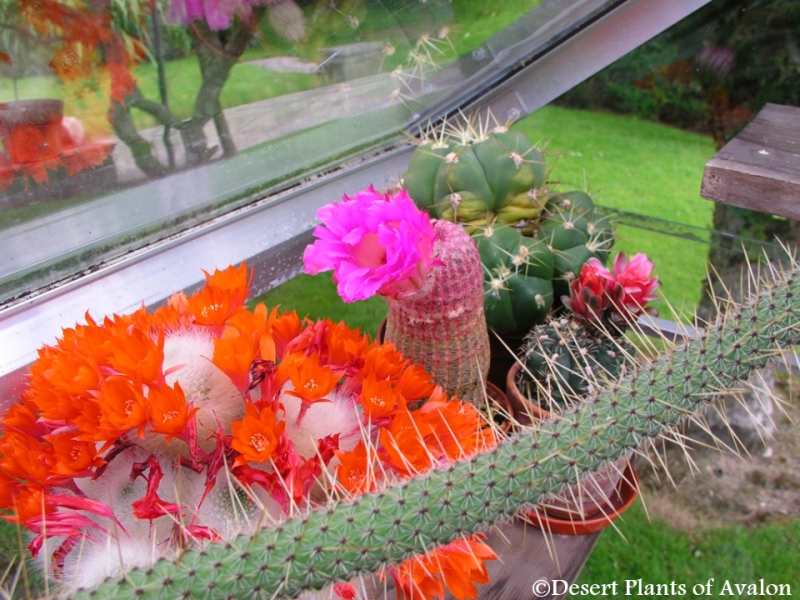
Here in Ireland and the U.K we all love to talk about the weather haha, but this Summer has been very much a talking point as it has been one of the hottest Summers on record with temperatures way above the average for many parts of the U.K and Europe as well as the U.S and other parts of the world. Many people will think of Cacti as plants that enjoy basking in the hot dry desert sun, but in reality excess sun and especially excess heat can make developing cactus buds drop off suddenly, remember cacti in their natural habitats can enjoy the sunshine and high temperatures as they have been grown there and they also have fresh air and ventilation around them, but cacti growing in cultivation on our hot sunny windowsills and hot sunny greenhouses/polytunnels don’t have the natural outside air that Cacti growing outside in their natural habitats have, Cactus plants in cultivation are almost always nursery grown and can not tolerate the excess heat and sun in a indoor environment especially during an unusually hot Heatwave. I know of many growers who have told me their cacti have dropped quite a few buds this Summer due to the 2022 Summer Heatwave.
Cactus bud drop can also commonly happen when we have quite a few days of good sunshine followed by days of grey cloudy weather, I always have a battle with this living in Northern Ireland with our wet and rainy Summers haha, we can get a few good days of very sunny weather and then days of grey skies and rain. Sunshine will help the cacti to produce their buds, but if the weather changes and you get a week or two of grey skies and cool temperatures the buds can dry up and fall off, unfortunately we cant control the weather and it is something we cant prevent, and with global warming on the increase heatwaves could become a much more common occurrence, and all I can say is to provide shade cover for cacti in excessive high heat during a heatwave and install a fan/s to keep the air circulation in your greenhouse/polytunnel moving, this may not prevent your cacti from dropping buds but it will definitely help to protect your cacti from any sun and heat damage.
2, OVER OR UNDER WATERING

Cactus bud drop can often happen if you are either over watering or not watering your cacti enough, desert cacti like to dry out in between watering them, and if a desert cactus is sitting in wet soil 24/7 this can make your cactus stressed and drop their buds as well as cause rot and fungus issues especially in high heat, as can keeping a desert cactus that is coming into bud too dry with little to no watering during the growing season. A cactus that is kept too dry over the growing season will become stressed and may drop any developing buds, during the active growing Season in Spring and Summer you should water your desert cactus once the soil has dried out in their pots, the exception to this would be the Rainforest Epiphytic cacti like the Epiphyllums, Rhipsalis and Schlumbergera ( Christmas and Thanksgiving Cacti ) this is because the Epiphytic cacti like to be kept well watered in moist soil during the Spring and Summer months, these Epiphytic cacti do not like to go too long without water during the growing season. With both the Desert cacti and the Epiphytic cacti always make sure all of your cacti are planted in a very well draining soil mix so the excess water can freely run out.
3, CHANGE OF POSITION

Moving your cactus to a different location or turning your cacti around to face the direction of the sun once it is developing buds can be a very common cause of bud drop, it can be tempting to move a cactus in bud into a position where you will be able to enjoy the flowers better, but it really is best to leave a cactus that is in bud in the same position until it has finished flowering, many cacti can be very prone to dropping buds if they are even slightly moved or turned around, Echinopsis and Schlumbergera ( Christmas and Thanksgiving Cactus ) are extremely prone to this. Many cacti are often sold for sale in the shops while in bud, these cacti have often been grown in large nurseries under powerful grow lights to encourage buds, and although its still very possible that cacti for sale in the shops can still flower once you have bought them, it can be more likely they will drop their buds before you get to see the flowers, however I have noticed that if you get a new cactus and it is in very early bud development then it can often still go on to flower for you, it seems to be the middle to later stages of the bud development that causes cacti to drop buds when newly purchased or moved. I also want to mention if you buy a cactus that is in flower already and the flowers seem to be lasting a very very long time, then its very possible that they are straw fake flowers, many newbies to the hobby get caught out by thinking they are buying a flowering cactus when really the flowers are straw fake flowers that have been glued onto the cactus.
4, INSECT PESTS

Insect pests can be a real pain for the developing cactus buds as many pests can hide on and in the buds, Mealy Bugs and Aphids are the most common pests of cactus buds, Mealy bugs love to hide at the base of the bud where you can’t see them causing damage to the growing bud/s making them drop, Aphids may not be as common as Mealy Bugs especially on cacti, but they can still attack the buds especially in the later stages of the bud development, I had quite a few Aphids attack my Epiphyllum buds this Spring, just like Mealy Bugs Aphids can be tiny and are very good at hiding and camouflaging themselves on cactus buds and they can be very hard to spot on your buds until its too late. If you notice your cactus buds seem to have stopped growing or are starting to shrivel up, put on your strongest glasses or get a strong magnifying mirror and check for insect pests, if pests are seen then remove them immediately by dabbing the pests with a little brush or q tip dabbed in rubbing alcohol/isopropyl alcohol, but be very gentle when doing this so not to harm the buds. Its best to avoid using chemical pest insecticides on the buds as this can harm the developing buds and disfigure the flowers and may also cause bud drop too.
5, NEW PURCHASE

Buying a new cactus that is already in bud in the shop is a common cause of the buds dropping off once you have brought your new cactus home, as mentioned before, a change of position for cacti can definitely cause bud drop and this is very common for Echinopsis cacti often seen for sale in the Summer months already in bud. Cacti that are less likely to drop their buds and are commonly seen for sale would be Mammillaria, Mammillaria cacti are one of the few types of cactus that will often still keep their buds and go on to flower when you bring them home. Schlumbergera (Christmas and Thanksgiving Cacti ) are nearly always sold around the November -December time in bud and its very common for some if not all of the buds to drop off a week or two after you have them. Schlumbergera buckleyi ( True Christmas Cactus ) is much more sensitive to bud drop than the Schlumbergera truncata ( Thanksgiving Cactus ) and this is why you nearly always see Sclumbergera truncata for sale over the Christmas Holiday period than Schlumbergera buckleyi. The good news is any cactus that drops buds once you have brought it home will still go on to flower for you the following year once it has acclimatised and as long as you are growing it correctly.
6, REPOTTING WHEN IN BUD

The best time to re pot a cactus is during the growing season which would be Spring and Summer or early Fall/ Autumn, but the problem with that is this can be the time your cactus may also be coming into bud, I always say that Spring and Summer and early Fall/Autumn is the best time to repot, however if you see any signs of buds developing its best to hold off repotting until your cactus has finished flowering, the reasons for this is because Cacti can suffer from stress just like people do, and repotting your cactus and changing the soil and handling the roots etc can cause stress to your cactus and this can definitely cause any developing buds to drop off prematurely, its best to wait until your cactus has finished flowering before you repot.
I hope you enjoyed reading this Article and I have made a video for my Cactus and Succulent You Tube Channel called Desert Plants of Avalon on ‘Why is my Cactus dropping Buds ?‘ and you can watch this video below.
Please don’t forget to Subscribe to my You Tube Channel called Desert Plants of Avalon for regular videos on Tips and Tricks on How to Care for your Cacti and Succulents.
Wishing you all an AMAZING Plant Powered day or evening.
